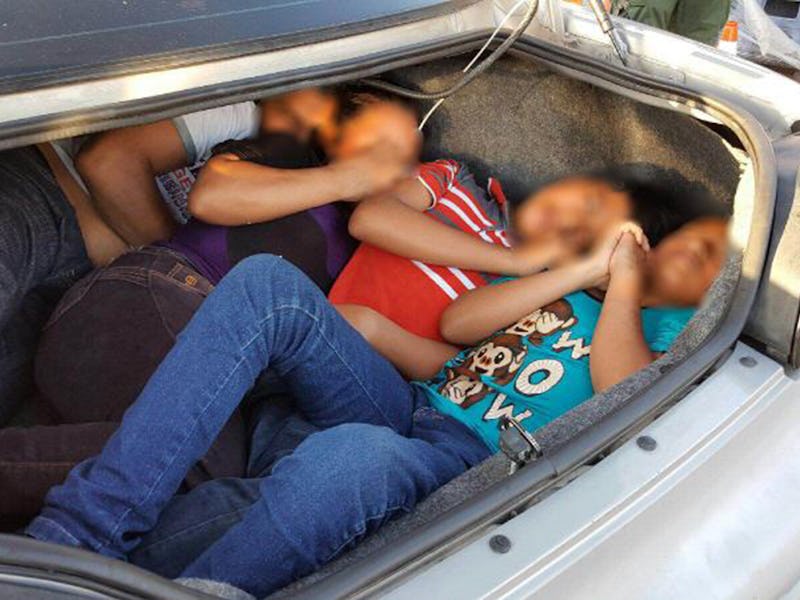Border Patrol's Flickr Is an Elephant Graveyard of Government Trauma Porn
Even propaganda can tell valuable stories.

News photographers were not let into a McAllen, Texas facility on Monday to document the conditions inside a United States Customs and Border Protection detention center for 1,100 immigrants. Instead, an Obama-era Flickr account filled with photos of the conditions — hundreds of people locked up in metal cages — was updated. It didn’t didn’t do much to soothe public outrage but it did highlight a disturbing collection of internet propaganda that the CBP has been assembling since 2010.
The federal government began posting photos to Flickr shortly after President Barack Obama was elected. Billed as the “social media president,” the move was clearly crafted to project an image of increased transparency and forward thinking. Flickr even implemented a new licensing categorization to facilitate the pictures.
CBP, like other agencies, quickly began adding favorable photos to their own Flickr account which was created in October 2010. Their first photo published in December, 2010 was a training-shot from the National Border Patrol Academy, reflecting the original intended use of the platform by the federal government — to show the wholesome hard work of being a CPB agent.
The first photo uploaded to the CBP Flickr account.
For years, the pictures uploaded to the CBP’s Flickr account remained mundane, showing things like recovered money, meetings, and memorials.
In 2013, however, the account shifted gears. Posting its first picture of a group of supposed undocumented immigrants in handcuffs on the ground somewhere in the desert. The photo was uploaded just days before Obama gave his speech in Las Vegas that emphasized devotion to border enforcement as part of an immigration reform bill that would would eventually die in the The House. The shift again represents the utility of the Flickr account — to project the government’s desired image.
The first photo, published in 2013, of CBP detaining migrants.
While deportations increased during Obama’s first term, as they have historically, they decreased during the years of his second term. Obama made a concerted effort during that period to slacken immigration laws. Perhaps as an independent reaction or as a concerted effort to compensate for shifting priorities, this is when CBP began posting their most disturbing pictures of human suffering at the hands of US immigration law. In 2015, CBP posted its first picture of a series depicting supposed migrants crammed into the back of a car. While the picture was framed as a “rescue” in the Flickr post, it’s hard to deny that the U.S.’ laws and policies on immigration and asylum shaped these events.
The first trunk photo.
Under Trump, the disturbing pictures have continued, but can be read very differently. In the face of a political platform almost entirely based on keeping undocumented immigrants out of the country, photos of migrants crammed into the back of cars are hard to read as anything else but villainizing, especially with a caption framing the photo as “human smuggling” rather than rescue.
Of course, in the Trump era, social media accounts have continued to be used as a form of PR. While this presents a conundrum for journalists trying to portray the truth, what governments say on their own channels over time tells its own valuable story.
Photo of a portion of the US border barrier being replaced under the Trump administration.